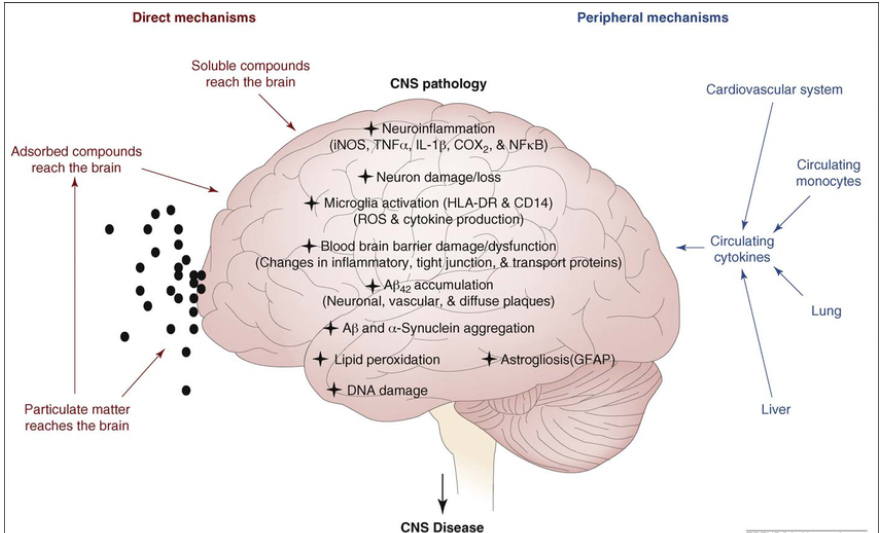Air pollution, particularly fine particulate matter (PM2.5), has become more widely associated with Alzheimer’s disease (AD), via various biological mechanisms that directly impact brain health. Here’s how air pollution specifically exacerbates AD risk:

Amyloid Plaque Formation
Studies have demonstrated the correlation between traffic-related air pollution exposure and amyloid-beta (Ab) plaque accumulation in the brain – characteristic of Alzheimer’s disease – and amyloid deposition, as measured by CERAD score. This suggests air pollution could facilitate the accumulation of these harmful proteins that contribute to AD progression.
Neuroinflammation
Airborne pollutants may induce neuroinflammatory responses in the brain. In animal models, exposure to PM2.5 was shown to activate microglia–immune cells found throughout the central nervous system–leading to their activation and release of proinflammatory cytokines like tumor necrosis factor-alpha (TNF-a). This inflammatory response has been linked with neuronal damage and cognitive decline seen among those diagnosed with Alzheimer’s.
Oxidative Stress
Oxidative Stress Prolonged exposure to air pollutants contributes to oxidative stress, which damages neurons and other brain cells. Oxidative stress occurs when there is an imbalance between free radicals and antioxidants in the body resulting in cell injury and inflammation that exacerbate neurodegenerative processes associated with Alzheimer’s.

Blood-Brain Barrier Disruption
Air pollution may threaten the integrity of the blood-brain barrier (BBB), a protective filtration system designed to control what enters the brain through its bloodstream. Disruption allows harmful substances, including toxins and pathogens, into the brain – potentially leading to further inflammation and neuronal damage.
Epigenetic Changes
Exposure to air pollution has been linked with changes in DNA methylation patterns that alter gene expression related to neurodegenerative processes and inflammation/amyloid processing genes – potentially contributing to Alzheimer’s pathology. These modifications could alter how these genes are expressed resulting in Alzheimer’s pathology.

Structural Brain Alterations
Studies have revealed a correlation between long-term exposure to air pollution and decreases in brain volume and thickness in areas affected by Alzheimer’s disease, such as the cerebral cortex and white matter. This can result in cognitive deficits and accelerate age-related decline.
Conclusion
The evidence linking air pollution with an increased risk of Alzheimer’s disease is compelling, showing multiple pathways through which pollution can negatively impact brain health. Additional research must be conducted on this front to fully comprehend these mechanisms and their ramifications for public health interventions aimed at decreasing exposure to air pollutants.
Discover practical strategies in “The Ultimate Guide to Eating Healthy on a Budget” to nourish your body without overspending. Learn meal planning, smart shopping, and budget-friendly recipes for a healthier lifestyle.






